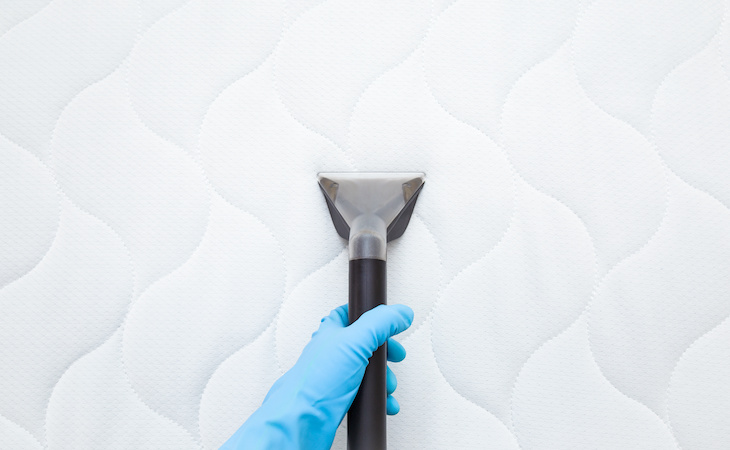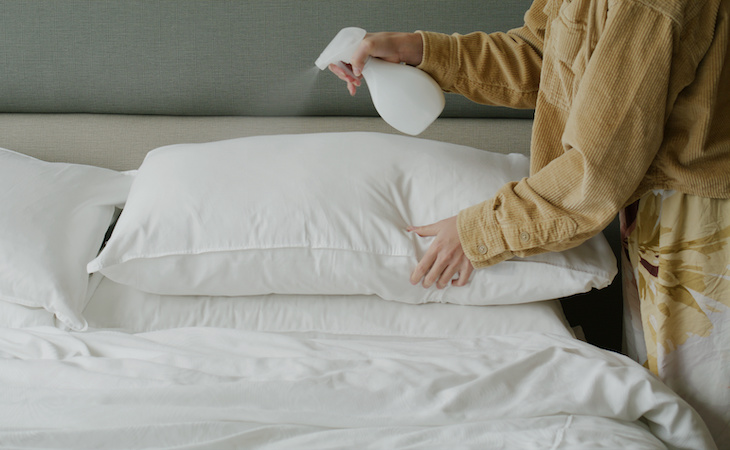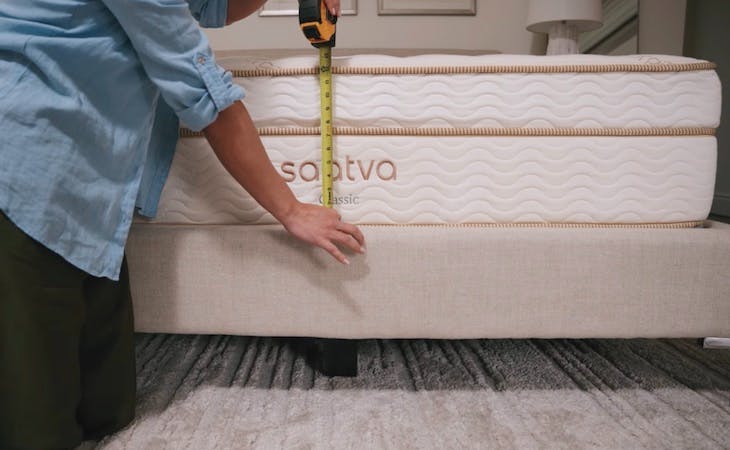If you suspect your mattress might be growing mold, you’re not alone. Mold is a common allergen that, among other places, can grow on the surface of your mattress.
The good news is that mold on a mattress isn’t the end of the world. It might not even be the end of your mattress. Especially if you act quickly, there are ways to get the situation back under your control.
Read on to find out how to get rid of mold on a mattress and how to prevent mold from growing on it in the first place.
Can mold grow on a mattress?
First of all, the bad news: Yes, it’s possible for mold to grow on a mattress.
Mold is a fungal growth that thrives in damp and warm environments. It grows best when the temperature is between 60 and 80 degrees Fahrenheit. Incidentally, this is the temperature that most humans tend to prefer as well.
Because your mattress accumulates your body heat and soaks up sweat and body oils, it can potentially create the ideal breeding ground for mold. This is especially true if you live in a warm and humid climate and/or if your bedroom is poorly ventilated.
Is mold on a mattress dangerous?
Mold on a mattress can be a health hazard and cause both short- and long-term health issues.
Some of the adverse health effects of mold exposure include:
- Burning, itchy, or watery eyes
- Skin rashes
- Persistent headaches
- Worsening symptoms for people with asthma or those suffering from allergies
- Respiratory problems that may include congestion, wheezing, and persistent colds or coughs (small children, older adults, and immunocompromised people are especially at risk for these)
- Lung infections for people with chronic lung disease
How to spot mold on a mattress
There are a few telltale signs that your mattress might be growing mold. These include:
- Smell: your mattress has a musty odor
- Discoloration: mold can cause some spots to change color
- Bubbling or peeling paint on the wall adjacent to your mattress
- If you or anyone else is experiencing common signs of mold exposure, such as a cold or cough that won’t go away, itchy or watery eyes, or persistent headaches
How to get rid of mold on a mattress
The good news is that mold on a mattress, however unpleasant, doesn’t necessarily mean all is lost. It takes some work and you have to act quickly, but it’s possible to get the situation under control if you suspect your mattress is growing mold.
Here’s how to get rid of mold on a mattress in a few easy steps:
- First, vacuum the mattress thoroughly on all sides. (Be sure to clean your vacuum’s dust catcher afterward so as not to spread mold next time you vacuum other surfaces.)
- In a disposable container, mix equal parts rubbing alcohol and warm water.
- Dip a cloth into the rubbing alcohol solution and wring it out well. Then use this damp cloth to scrub away any visible mold in circular motions, making sure to go beyond the area of visible mold patches in order to kill any invisible spores.
- After that, place your mattress outside in direct sunshine. Sunshine is the best way to kill mold naturally, plus it will dry out the mattress preventing additional mold growth.
- Spray upholstery-safe disinfectant all over the surface of the mattress—but make sure to do it sparingly and evenly.
- Leave your mattress to dry completely in the sun again.
How to prevent mold on a mattress
The best cure is, of course, prevention. Here’s how you can protect your mattress from growing mold in the first place:
- Make sure your bedroom is well-ventilated.
- Use a dehumidifier in your bedroom if you live in a humid climate.
- Us a slatted bed foundation to increase airflow to your mattress.
- Keep your mattress clean and dry (don’t go to bed sweaty and don’t eat/drink in bed to prevent spills). Add mattress cleaning to your spring cleaning routine.
- Choose a mattress material that’s mold-resistant.
FAQs
Can you get mold out of a mattress?
It’s possible to remove mold from a mattress, although this will require some work. After vacuuming your mattress thoroughly on all sides, use a solution of equal parts rubbing alcohol and warm water to scrub away at the mold, then let the mattress dry in direct sunshine.
What does it mean when a mattress is moldy?
Mold is a type of fungal growth that needs a moist and warm environment to thrive. Since your mattress absorbs your sweat and body heat, it’s possible for it to become such an environment. Some of the signs of a moldy mattress include musty odor and discoloration.
How long does it take for a mattress to mold?
Mold can start growing on a damp mattress within 24 to 48 hours. The longer you leave it, the harder it will be to clean it—so it’s important to get to it as soon as you suspect it might be growing mold.
Find a mold-resistant mattress at Saatva
Saatva offers a wide variety of mattresses to suit every sleep style. All of our mattresses are treated with Guardin™, a proprietary blend of all-natural essential oils and minerals that naturally inhibits the growth of bacteria, mold, and mildew and prevents the discoloration they can cause on the surface of a mattress.
Plus, our mattresses come with a 365-night home trial so you can test one out before deciding if it’s right for you. Take our online mattress quiz to find your perfect match.












